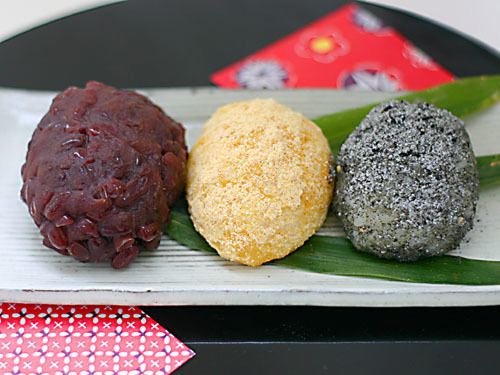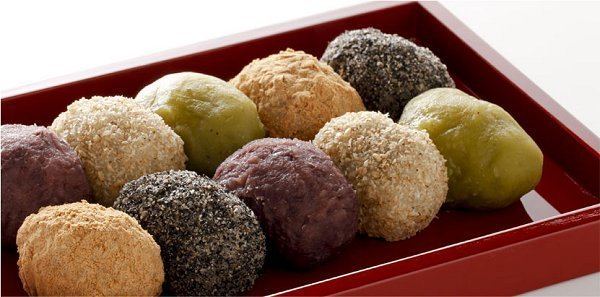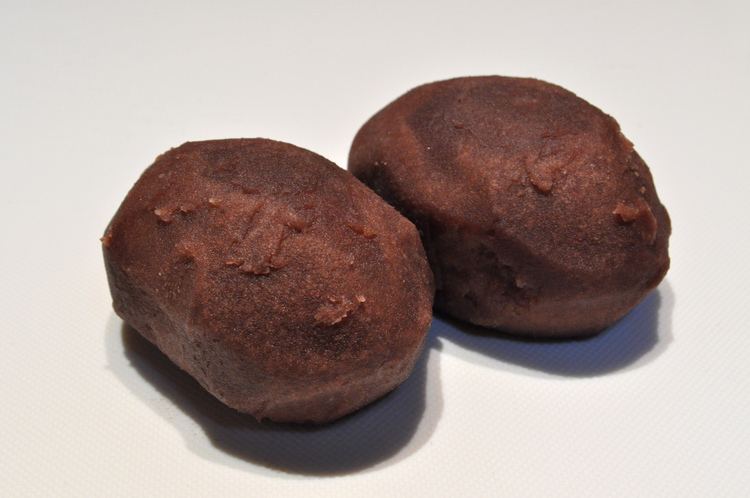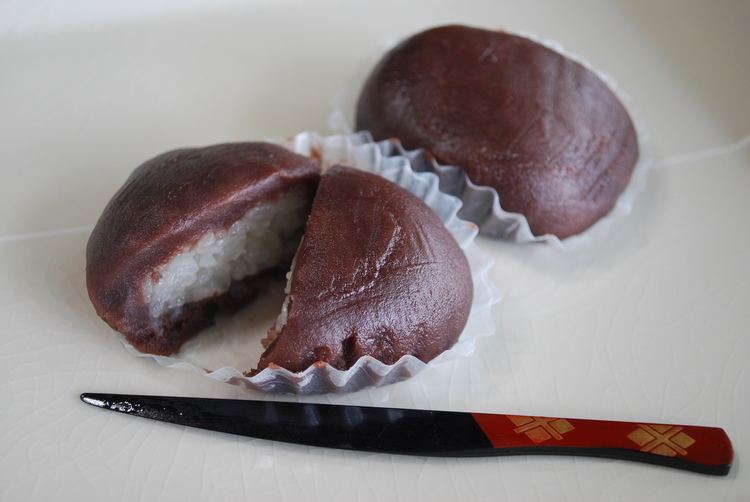Variations Ohagi | ||
 | ||
Similar Sweet bean paste, Kinako, Wagashi, Mochi, Daifuku | ||
Ohagi botamochi japanese sweet sticky rice balls ochikeron create eat happy
Botamochi (ぼたもち or 牡丹餅) are a Japanese sweet made with sweet rice and sweet azuki (red bean) paste. They are made by soaking sweet rice for approximately six hours. The rice is then cooked, and a thick azuki paste is hand-packed around pre-formed balls of rice.
Contents
- Ohagi botamochi japanese sweet sticky rice balls ochikeron create eat happy
- Botamochi ohagi japanese traditional sweets recipe
- References

A very similar sweet, ohagi (おはぎ), uses a slightly different texture of azuki paste, but is otherwise almost identical. It is made in autumn. Some recipe variations in both cases call for a coating of soy flour to be applied to the botamochi/ohagi after the azuki paste.

The two different names are derived from the Botan (peony) which blooms in the spring and the Hagi (Japanese bush clover or Lespedeza) which blooms during autumn.

Botamochi is the modern name for the dish Kaimochi (かいもち) mentioned in the Heian Period text Uji Shūi Monogatari (宇治拾遺物語).

The proverb Tana kara botamochi (棚からぼたもち), literally "a botamochi falls down from a shelf", means "a stroke of good luck".

The term is also used for a specific pattern of Bizen ware with two, three or five round marks, as if the marks of the small balls of rice cakes were left on the plate.

